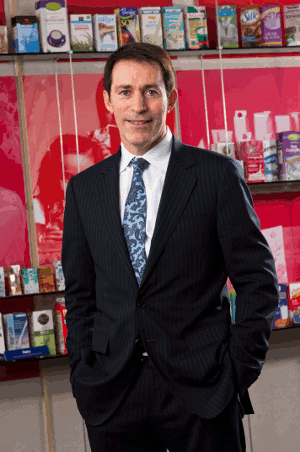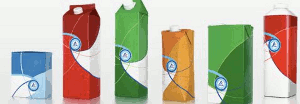 By Michael Zacka, president and CEO, Tetra Pak North America
By Michael Zacka, president and CEO, Tetra Pak North America
Cell phones, and now iPhones, have made the landline an afterthought, especially in developing countries where the latter requires costly and complex networks. People have leapfrogged straight to cell and smart phones for the immediacy and mobility they provide.
Likewise, milk cartons, first used worldwide in the mid-20th century, and the shelf stable aseptic version that makes refrigeration unnecessary, have leapfrogged the old-fashioned milk bottle. As a result, the aseptic carton, which predominates in Europe and Asia, has also made the refrigerated carton an afterthought in most of the world.
Billions of people in developing countries can have milk without the necessity of expensive and elusive refrigeration, thanks to the shelf-stable aseptic milk carton. Tetra Pak was the first to apply aseptic technology to the milk carton, improving the shelf life of milk and allowing the dairy product to remain unspoiled for months at a time instead of days.
American consumers have grown accustomed to having their milk cold and refrigerated to keep it fresh. But with advancements in processing and packaging, milk sold in other parts of the world in innovative Tetra Pak aseptic cartons doesn’t require refrigeration. It can go anywhere, anytime, for sustenance and snacking.
Milk delivery underwent a series of changes, sparked by the introduction of the milk bottle. It spurred a series of life-altering inventions that started slowly with pasteurization processes for milk in the 1890s, and eventually led to the development of the carton.
Tetra Pak’s founder, Ruben Rausing, introduced the first aseptic milk carton in 1961 after more than 20 years of trial and error. Just like the advances that produced lifestyle-changing mobile devices, the innovation that created the Tetra Pak aseptic milk carton has made milk as mobile as an iPhone and as indispensable to feeding the world as portable computer devices are to communication.
In the developing world, where almost a billion people don’t have enough to eat, according to the Food and Agriculture Organization of the United Nations, the innovation of the aseptic carton has been essential in delivering a nutritious food source. In these parts of the world, poverty is high, refrigeration is expensive and the populations face great health risks from contaminated provisions.
Milk is one of the most nutritionally dense, wholesome and affordable foods available today. The aseptic milk carton enables it to be transported and stored without refrigeration. The upshot is vital nutrition is conveniently provided to millions without a complicated, costly infrastructure.
With no further need for a cold distribution chain, the reach of milk was expanded significantly and the production and shipping costs dropped even more dramatically, changing the way milk is distributed and consumed worldwide. Today, Tetra Pak provides milk cartons to more than 170 countries around the globe.
The technology behind the innovations required to make and distribute aseptic shelf-stable milk cartons is complex, vast and lightning-fast, in many instances. It includes:
• technologies that yield highly sophisticated, paper-based materials;
• machinery that forms these materials into cartons with myriad shapes, each designed to fulfil specific consumption and distribution needs;
• systems that allow the cartons to be sealed and sterilized so the milk is not exposed to contaminants; and
• transportation methods to distribute them globally and keep them intact and hygienic without preservatives.
 These innovations have earned Tetra Pak more than 7500 individual patents and patent applications and many innovation awards. They also earned the company recognition in New York City’s Museum of Modern Art. In 2003, Tetra Pak’s first two cartons, Tetra Classic and Tetra Brik, were celebrated in the “Humble Masterpieces,” exhibition of “everyday inspired designs that help make life easier, safer and more fulfilling.”
These innovations have earned Tetra Pak more than 7500 individual patents and patent applications and many innovation awards. They also earned the company recognition in New York City’s Museum of Modern Art. In 2003, Tetra Pak’s first two cartons, Tetra Classic and Tetra Brik, were celebrated in the “Humble Masterpieces,” exhibition of “everyday inspired designs that help make life easier, safer and more fulfilling.”

Recent Comments
Discount code
Alex Shimray
Thank you for sharing this! This is really...
Thank you for sharing this! This is really...
yes, nowadays more teenagers like to have a...